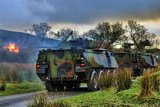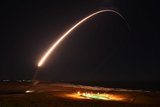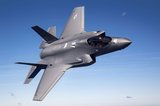Lockheed Martin Sniper Advanced Targeting Pod program Receives William J. Perry award
The Precision Strike Association has awarded the Lockheed Martin and US Air Force Sniper Advanced Targeting Pod (ATP) program the 14th annual William J. Perry Award. The award is presented annually to programs that strengthen the country's national security by applying precision strike capability to Department of Defense systems. The ceremony took place today at the Precision Strike Association's Winter Roundtable event in Arlington, VA.
The Sniper ATP program was selected based on its significant impact in combat operations by reducing aircrew workload, enhancing Warfighters' situation awareness, and shortening the timeline to engage enemy insurgents while helping avoid fratricide and preventing harm to the civilian population.
"The Precision Strike Association is very proud to present the William J. Perry Award to the United States Air Force and Lockheed Martin for their Sniper Advanced Targeting Pod," said Precision Strike Association chairman Andy McHugh. "This government-industry team has demonstrated the tenacity and innovation required to develop, test and field the most advanced technology for targeting and intelligence, surveillance and reconnaissance wrapped into a single aircraft mounted pod. The Sniper pod's advanced features are changing the way our armed forces operate in theater."
Featuring exceptional image quality and stability due to its next-generation design, the Sniper ATP delivers extremely precise weapon targeting for multiple fixed and moving targets, a high performance datalink for real-time coordination between aircrews and ground troops, and weapon damage estimation radius displays to reduce the potential for collateral damage real time in the cockpit. The Sniper pod is also heavily used as a non-traditional intelligence, surveillance, and reconnaissance asset for convoy route reconnaissance and battlefield situational awareness.
"The Sniper ATP is the most widely-deployed targeting pod in theater and we are honored to receive this recognition from the Precision Strike Association," said Ken Fuhr, Fixed-Wing Program director at Lockheed Martin Missiles and Fire Control. "We remain dedicated to advancing precision strike technologies that help our customers meet their defining moments."
Deployed in theater on US Air Force and coalition partner F-15, F-16, A-10 and B-1 aircraft, the Sniper ATP is also operational on the CF-18 and Harrier GR7 and GR9 aircraft. Platform expansion continues with the B-52, Tornado, Typhoon, unmanned aerial vehicles and additional aircraft.
Source: Lockheed Martin
More from Defence Notes
-
![Canada set to look away from its neighbour and across the Atlantic for partners]()
Canada set to look away from its neighbour and across the Atlantic for partners
While non-EU UK struggles to join the Security Action for Europe initiative, which provides loans for defence programmes, Canada has become the first country outside Europe to get access – and did so for a nominal fee.
-
![NATO experiments with solutions to integrate networks, AI and uncrewed systems]()
NATO experiments with solutions to integrate networks, AI and uncrewed systems
During the latest edition of the NATO DiBaX, the alliance tested multiple capabilities to inform requirements for future efforts.
-
![Leonardo unveils plans for Michelangelo air defence dome]()
Leonardo unveils plans for Michelangelo air defence dome
The new multi-layered defence system will harness AI to neutralise airborne threats and protect Europe from Russian aggression.























